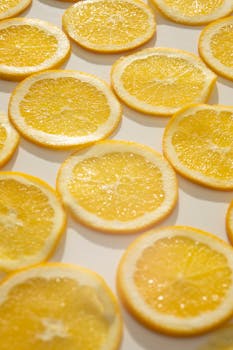Benefits
Immune Support
Digestive Health
Skin Health
Weight Management
Bone and Heart Health
Get creative with Orange peel
Incorporating dried, ground orange peel into homemade spice mixes offers a unique citrusy twist to any seasoning, enhancing flavors in both sweet and savory dishes
Crafting eco-friendly, fragrant candles by embedding pieces of orange peel into the wax not only adds a pleasant aroma but also contributes to a more sustainable crafting practice
Creating an all-natural, orange peel-infused vinegar cleaner delivers a powerful, eco-friendly cleaning solution that leaves surfaces sparkling while imbuing rooms with a fresh, citrus scent
Lastly, orange peel can be used to make a delightful orange zest sugar, perfect for rimming cocktail glasses or sprinkling over baked goods, adding a subtle orange flavor and decorative touch
Something you can make with Orange peel
Origin
Orange peel is derived from the outer skin of oranges, which are citrus fruits originating from Southeast Asia. It is believed that oranges were first cultivated in China around 4,500 years ago. From there, the cultivation of oranges spread to other parts of Asia, including India and Persia. \n\nOranges were introduced to the Mediterranean region by Arab traders in the 9th century. The fruit gained popularity in Europe during the Middle Ages and was later brought to the Americas by Spanish explorers in the 15th century.\n\nToday, oranges are grown in many regions across the globe, including Spain, the United States, Brazil, Mexico, and China. The orange peel, which is the outermost layer of the fruit, is often used as a flavoring and aromatic ingredient in various culinary preparations, including desserts, beverages, and savory dishes.
